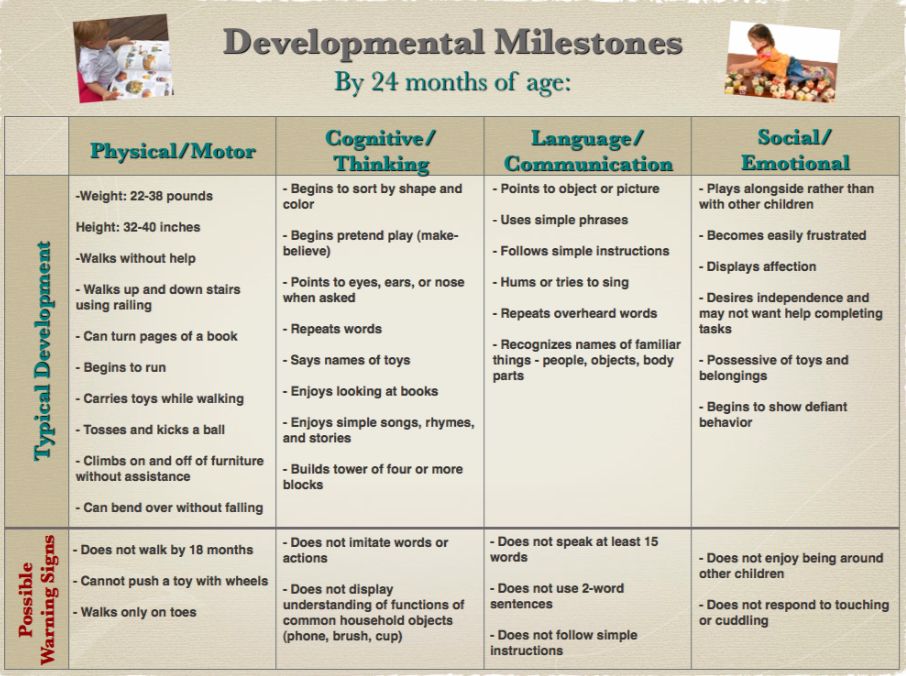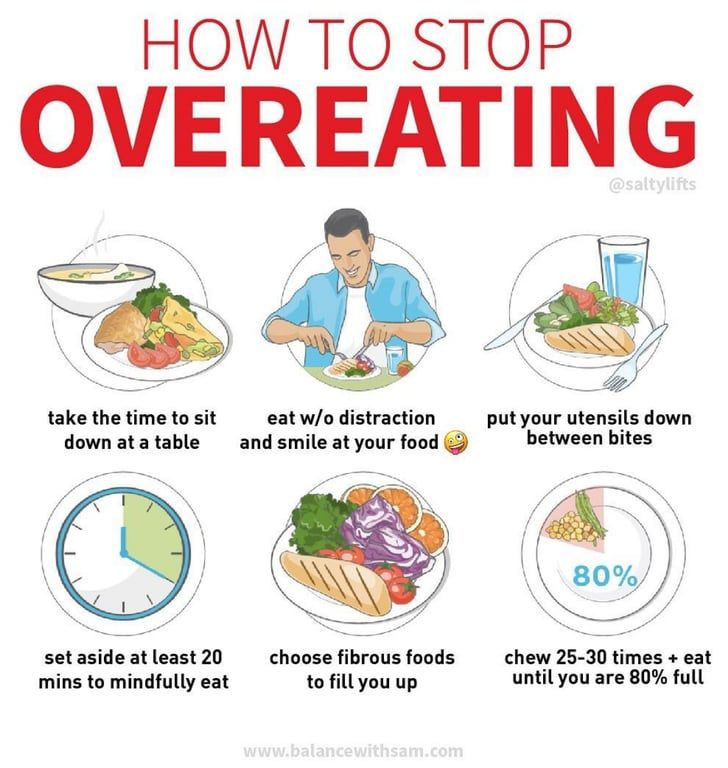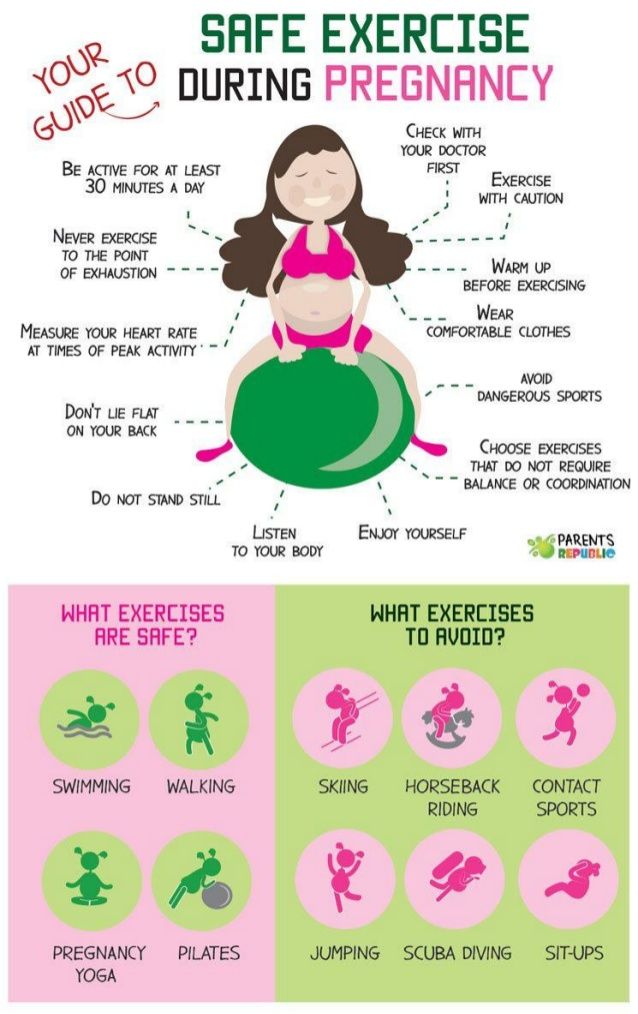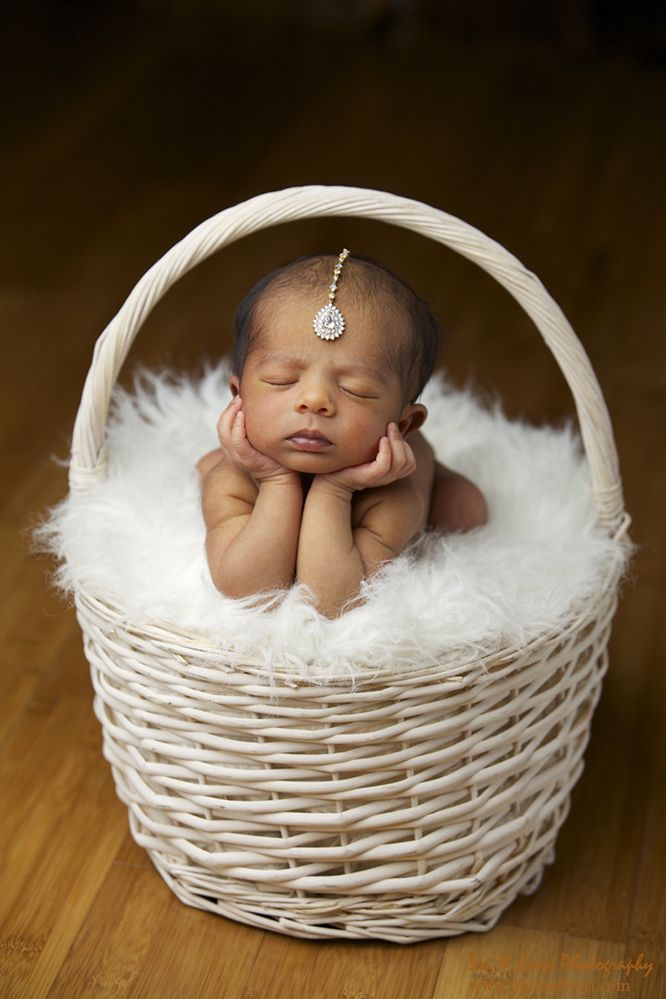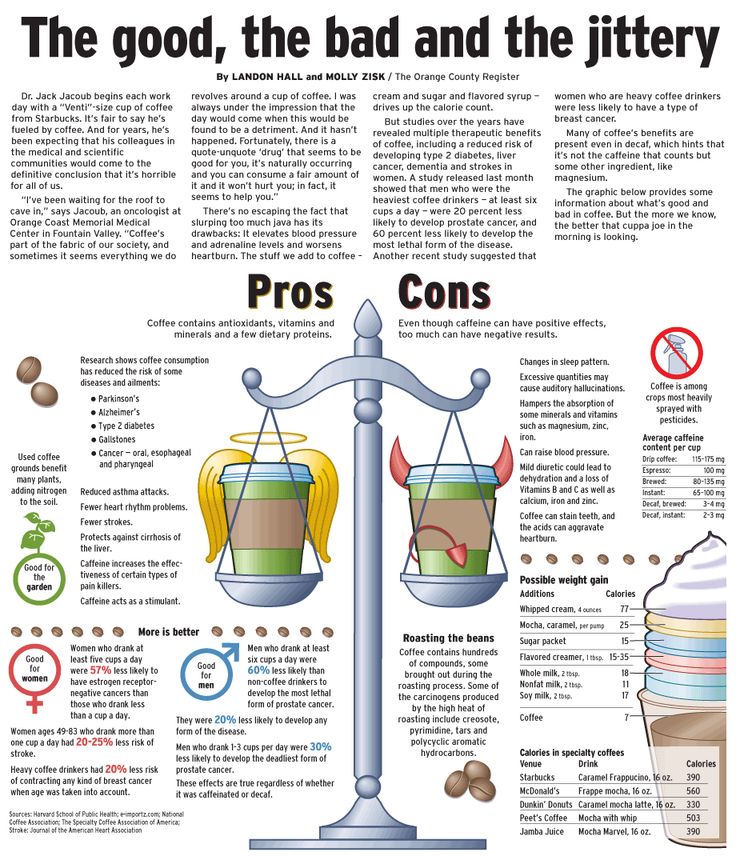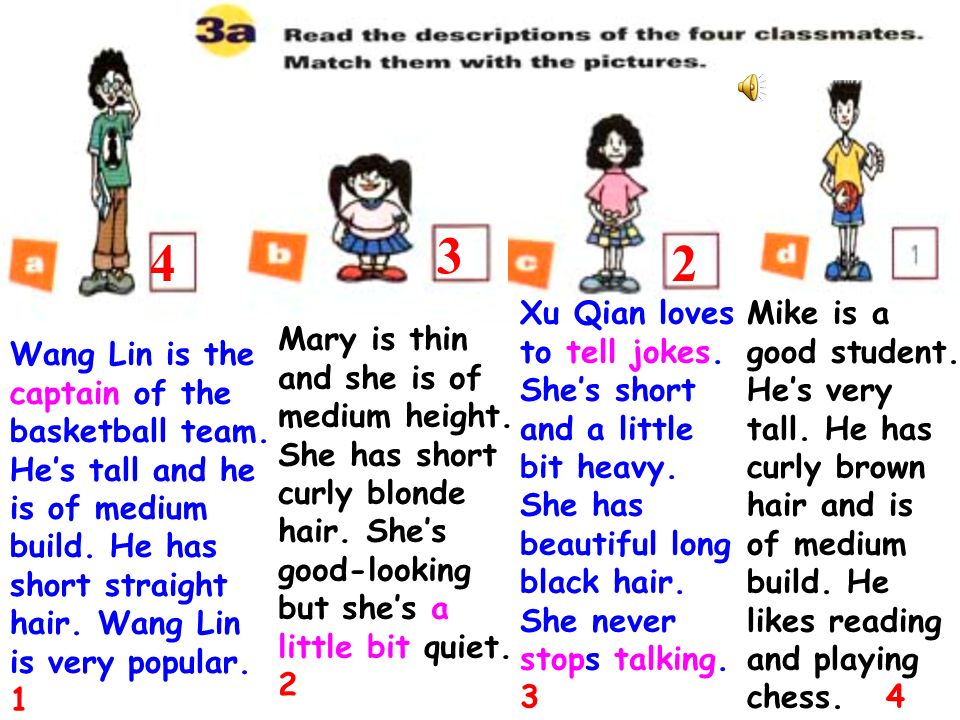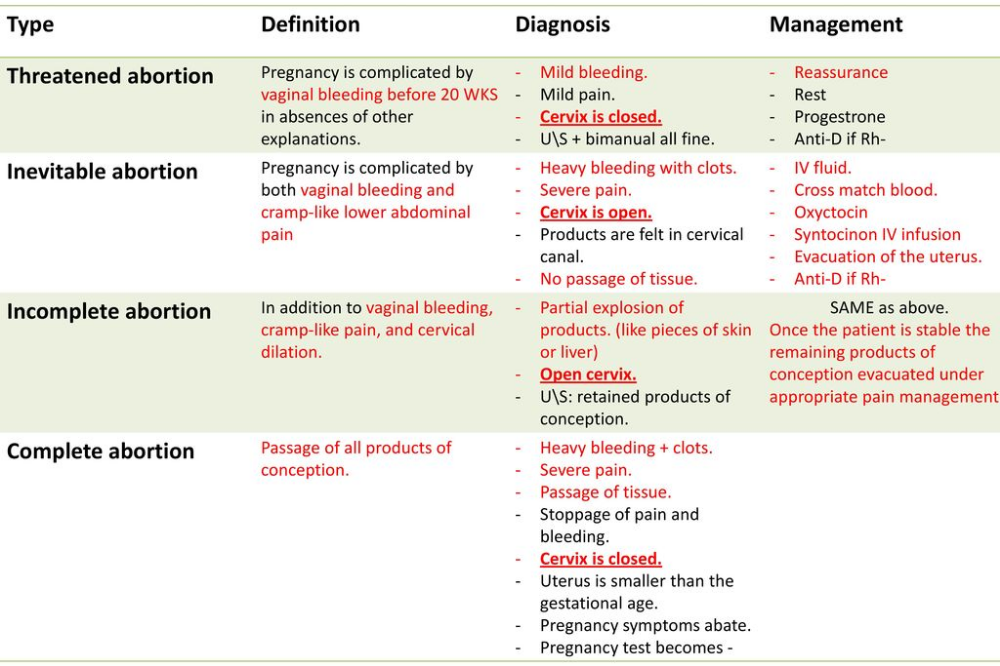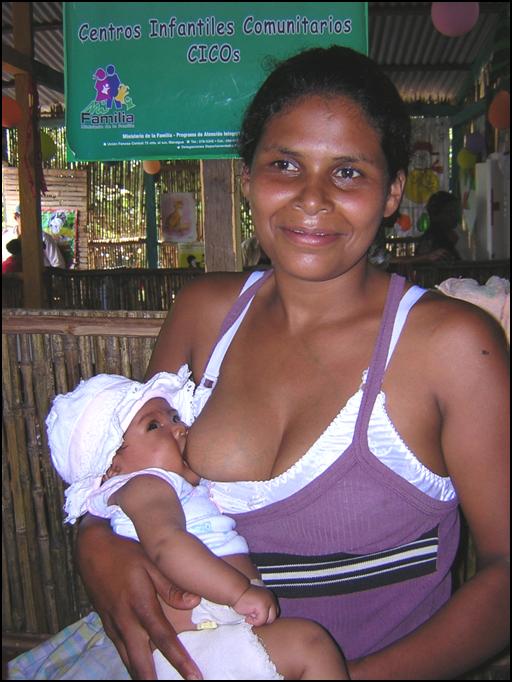2 month motor milestones
Your baby's developmental milestones at 2 months
Explainer
Everything you need to know about your growing 2-month-old.
UNICEF
Your 2-month-old is wide-eyed and curious, smiling at faces and engaging with everything around her/him. Babies at this age are social and love to interact. Here is how your little one will be growing, learning and changing during this sweet age.
| Social and emotional |
| Language and communication |
| Brain development |
| Movement and physical development |
| Food and nutrition |
| Things to look out for |
| Tips and resources |
| < Back to Parenting Milestones |
Social and emotional milestones at 2 months
Some of the ways you’ll see your little one learning to connect with the people around her at 2 months.
- Can self-soothe by sucking on her hand.
- Starting to smile at others.
- Attempting to look at her parents.
Tips for parents
- Engage in skin-to-skin contact. Your warmth will help soothe her.
- Hold your baby close to your face and make eye contact. This will help your little one learn your features.
Language and communication milestones at 2 months
How your baby is engaging and expressing his needs.
- Alerted by sounds and turns toward them.
- Making cooing noises.
Tips for parents
- Have “conversations” with your baby when he makes cooing noises by speaking back to him in a baby talk voice. This back and forth is important for helping him to develop language and communication skills.
Brain development milestones at 2 months
Your child’s brain is growing!
- Beginning to track people and objects with her eyes.
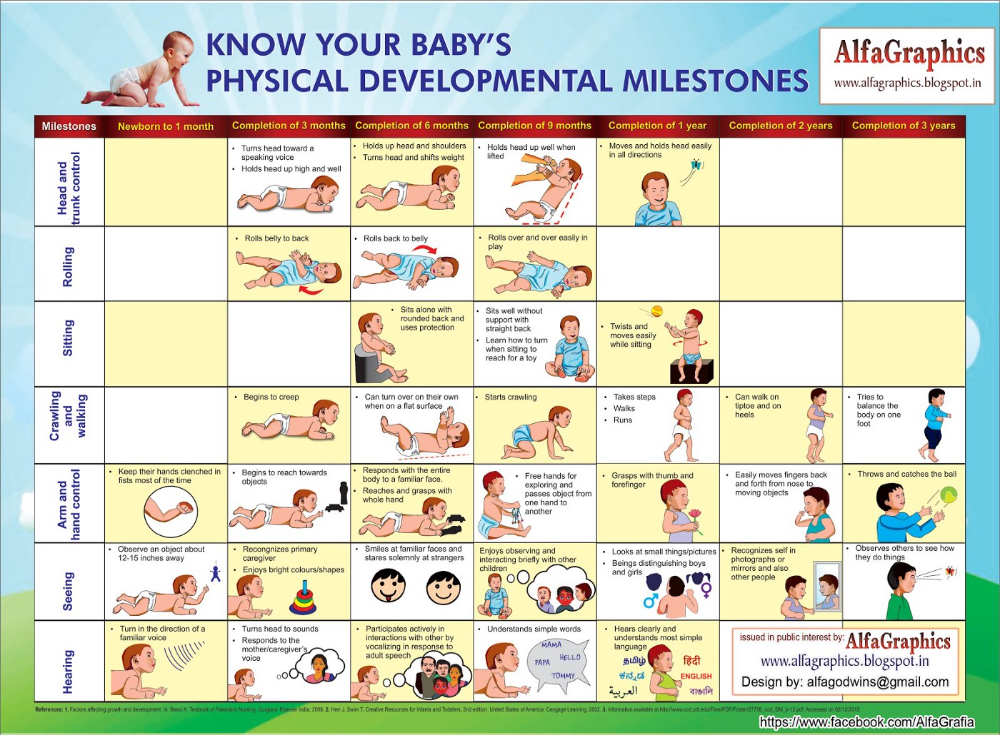
- Starting to get fussy if she’s feeling bored.
- Paying attention to the faces she sees.
Tips for parents
- Say the names of the objects or people your little one is showing interest in.
Movement and physical development milestones at 2 months
How he’ll move through his environment.
- Arm and leg motions will be smoother.
- Can push up while on his belly and hold his head up.
Tips for parents
- Participate in tummy-time with your little one by facing your baby and speaking with him while he is placed on his stomach in front of you.
- Encourage him to move his head, arms and legs by moving safe toys around him.
Food and nutrition milestones at 2 months
What mealtimes look like at 2 months.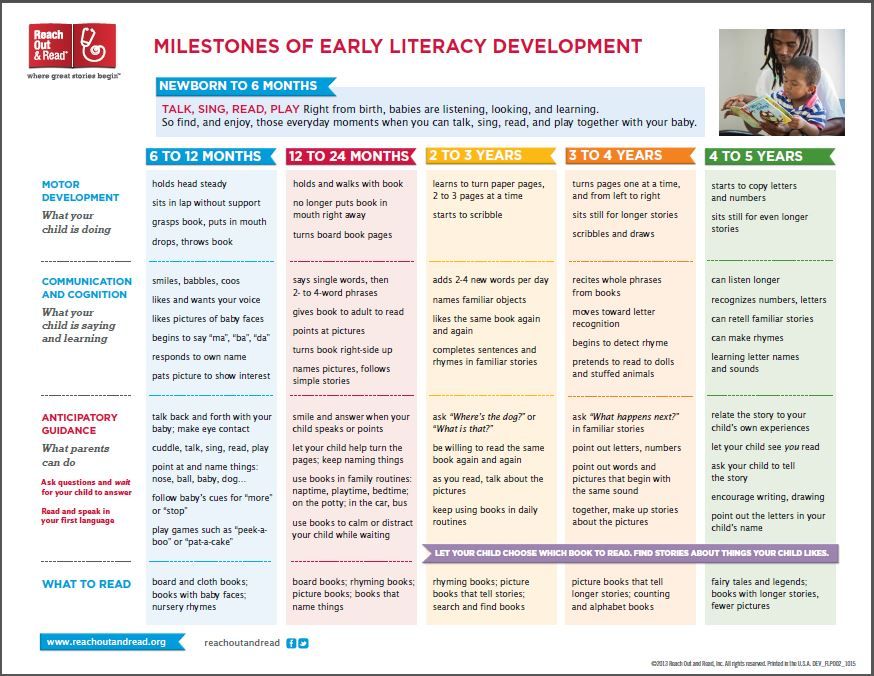
- All of the nutrition your baby needs can be found in breastmilk.
- She’ll easily suck and swallow during feeding.
- Her tongue will move back and forward to suck.
- She’ll latch onto her mother’s nipple or a bottle.
Tips for parents
- You should see signs of hunger about 8 to 12 times in 24 hours. Newborn babies need to eat a lot because they’re growing rapidly. They double their birth weight in the first six months of life, or before.
Things to look out for
While all babies develop differently, you should speak to your paediatrician if your 2-month-old:
- Can’t latch while nursing or bottle feeding.
- Loses a lot of breastmilk or formula out of the side of his mouth while feeding.
- Won’t smile at people.
- Doesn’t bring his hands to his mouth.
- Has no response to loud noises.
- Doesn’t track people and objects as they move.
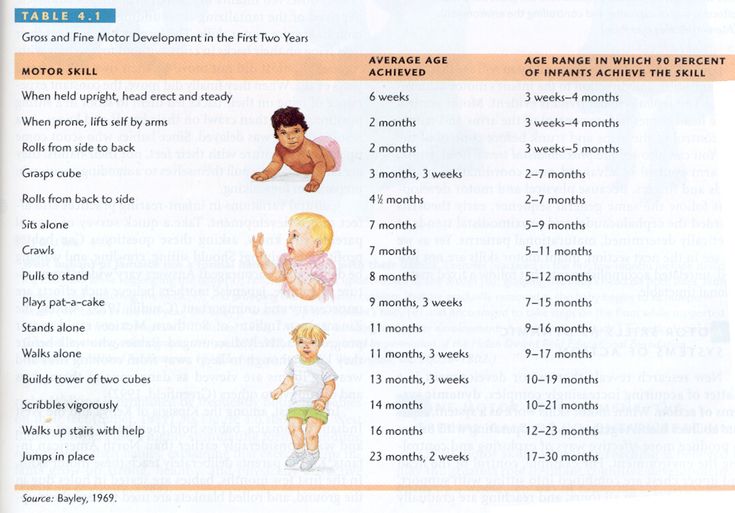
- Is unable to hold his head up while on his tummy.
True or false?
Loading...
Explore age groups
2 Months | 4 Months | 6 Months | 9 Months | 1 Year | 18 Months | 2 Years
< Back to Parenting Milestones
Your baby's growth and development - 2 months old
beginning of content5-minute read
Listen
Your 2-month-old is growing fast and becoming more alert. They will be making more sounds and getting more skilled at moving their body. They will still be crying a lot - but you've probably already seen that magic first smile (usually at 6 weeks) which somehow makes all the hard work worthwhile.
Your 2-month-old
By 2 months, your baby will have put on a lot of weight and may be looking round and chubby. As their muscles develop, their arms and legs start to move more freely, stretching out to make them seem taller and leaner.
During their first 2 months, your baby is growing very quickly. They will keep growing at this rate, probably gaining about 900g and growing 2.5 cm to 3.8 cm every month.
Babies often have a growth spurt at about 6 weeks. This might make them more fussy because they want to eat more than usual. It might feel like you’re feeding all the time, especially at certain times of the day. You can sometimes tell your baby is hungry if they’re sticking their tongue out or sucking. If they doze off or turn their head away, they’re probably full.
At 6 to 8 weeks, your baby will have their scheduled vaccinations - 2 injections and the oral rotavirus vaccine.
Understanding baby growth charts
A growth chart helps you and your doctor keep track of how your baby is growing.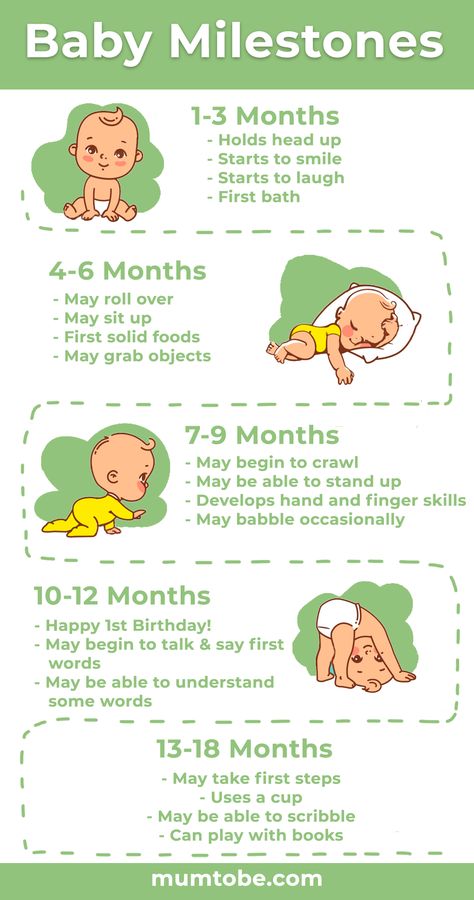
What can your baby do?
By 2 months your baby will have discovered their fingers and hands. They will hold their hands open and grab an object (although they don’t know how to let go yet!) They might also clasp both hands together.
2-month-old babies will start to learn how to coordinate their movements. Instead of the jerky arm and leg movements that made when they were born, they can move more smoothly and in more of a circular motion. They will kick both legs strongly and will be very wriggly. They may even roll over, so don’t ever leave them alone on a change table.
Their neck will be getting stronger all the time. During tummy time they might be lifting their head and moving it from side to side. Some babies can even lift their chest off the ground by now.
Some (though very few) babies can sleep through the night by the time they reach 2 months. But even if you’re not one of the lucky parents or carers, your baby will at least be sleeping for longer stretches at a time.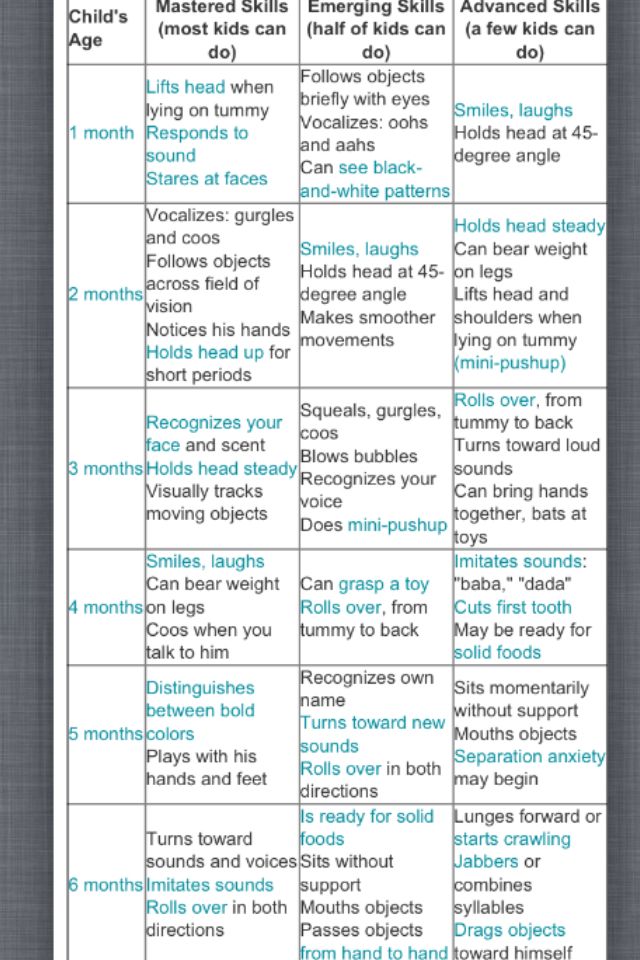 They’ll probably be having 2 to 4 long sleeps and will be more awake and alert during the day — although babies’ sleep patterns still vary widely at this age.
They’ll probably be having 2 to 4 long sleeps and will be more awake and alert during the day — although babies’ sleep patterns still vary widely at this age.
Your baby’s eyes, which may have been crossed when they were younger, move together most of the time now. They will clearly recognise you, will look at you when you talk to them, and can follow you with their eyes. They will love looking at your face and will be giving you some lovely smiles. They will like looking at objects with more complex patterns and colours.
They will also be making a lot more sounds and gurgling, including sounds like ‘a’ or ‘o’, and they will seem to listen to you and talk back to you.
How can I help my baby develop?
As your baby develops more of a rhythm, you’ll find they are awake more during the day. This gives you more time to interact with them and help them develop. Spend plenty of time reading to them, singing, and talking. That way they’ll get used to sounds and words and will start to develop language and communication skills.
You can play with them by letting them look at and feel a variety of objects with different designs, colours, and shapes. Plastic toys and soft balls work well.
They will love looking at you, so make sure you smile at them a lot. It releases ‘feel-good’ chemicals in your baby’s body and helps them to feel safe and secure. You could also give your baby a massage to relax them. After a bath is a good time.
Continue with 1 to 5 minutes tummy time to strengthen their neck and upper body. It will help them develop the muscles they’ll need later to sit and crawl. But always put your baby to sleep on their back.
Development problem signs
Babies develop at a different rate. At 2 months, talk to your doctor or maternal child health nurse if:
- they aren’t smiling by 8 weeks
- they don’t calm down, even for a little while, when you pick them up to comfort them
- one side of their body seems to be stronger than the other
- they’re still holding their fingers in a tight fist
- sudden noises don’t startle them
- they aren’t feeding properly
- they’re floppy or stiff
Where can I go for help?
If you are worried or would like to discuss any issues with your baby’s development, speak to your doctor or child health nurse.
Speak to a maternal child health nurse
Call Pregnancy, Birth and Baby to speak to a maternal child health nurse on 1800 882 436 or video call. Available 7am to midnight (AET), 7 days a week.
Sources:
Raising Children Network (1-2 months: newborn development), Women's and Children's Health Network (Milestones: Children 0-4 years), Kids Health (Your baby’s health – 2 months), Australian Children's Education and Care Quality Authority (Developmental milestones and the Early Years Learning Framework and the National Quality Standards)Learn more here about the development and quality assurance of healthdirect content.
Last reviewed: October 2020
Back To Top
Related pages
- Bonding with your baby
- How your baby learns - birth to 3 years
- Your baby’s growth and development – first 12 months
- Understanding baby growth charts
This information is for your general information and use only and is not intended to be used as medical advice and should not be used to diagnose, treat, cure or prevent any medical condition, nor should it be used for therapeutic purposes.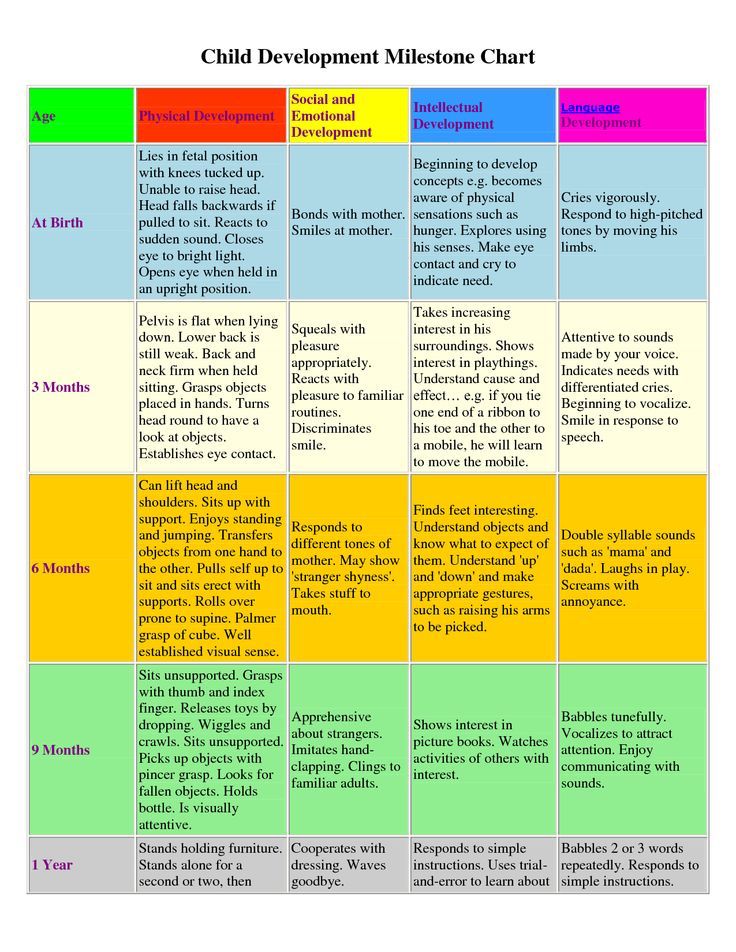
The information is not a substitute for independent professional advice and should not be used as an alternative to professional health care. If you have a particular medical problem, please consult a healthcare professional.
Except as permitted under the Copyright Act 1968, this publication or any part of it may not be reproduced, altered, adapted, stored and/or distributed in any form or by any means without the prior written permission of Healthdirect Australia.
Support this browser is being discontinued for Pregnancy, Birth and Baby
Support for this browser is being discontinued for this site
- Internet Explorer 11 and lower
We currently support Microsoft Edge, Chrome, Firefox and Safari. For more information, please visit the links below:
- Chrome by Google
- Firefox by Mozilla
- Microsoft Edge
- Safari by Apple
You are welcome to continue browsing this site with this browser.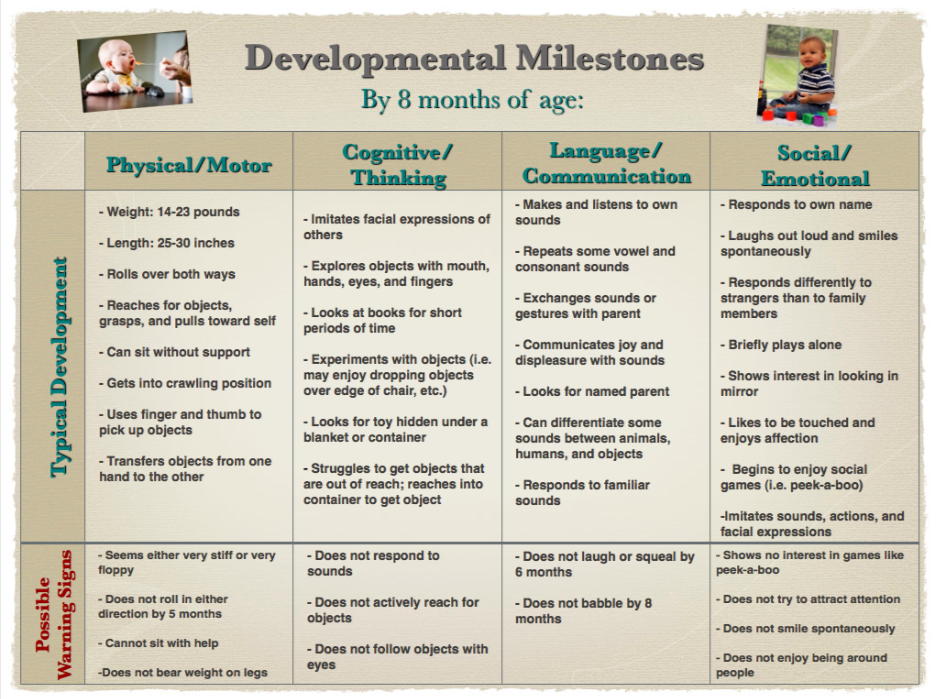 Some features, tools or interaction may not work correctly.
Some features, tools or interaction may not work correctly.
Psychomotor development of a child under one year old: monthly calendar, norms
Each parent is concerned about the correct, harmonious development of his baby, so the question “Is my child developing normally?” always relevant among parents. However, most of all, this issue is puzzled by the “newly minted” moms and dads, who have just begun to bear the honorary title of “parents”. The first 12 months of the development of the first child is always a difficult period for all relatives and relatives of the baby. Everyone and everyone is trying to help with advice, to suggest something and to teach, how they bring young mothers and fathers to hysterics. “But Masha’s daughter at your age already held her head, and Vova’s daughter already had two teeth” - such remarks, unfortunately, are a special case in the life of the parents of the first-born.
How not to give in to anxiety and know if your child is developing in time, the psychomotor development calendar will help.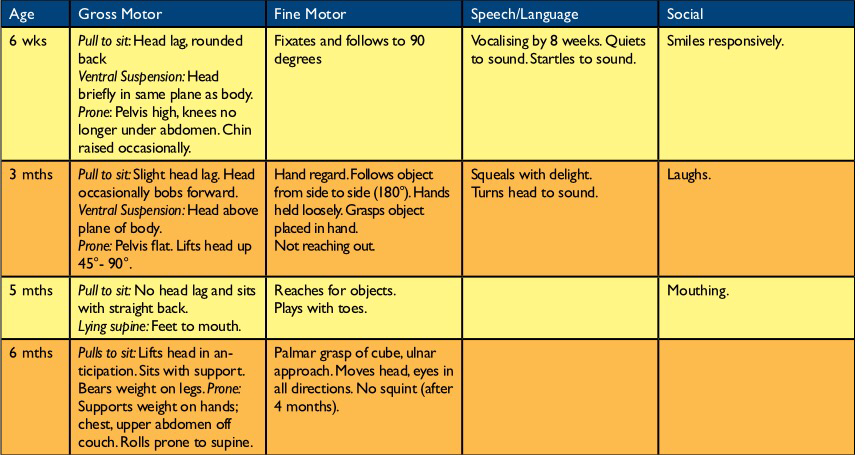 Psychomotor development - what is it? To begin with, it is worth answering a simple question, what is it - the psychomotor development of a child? PMR is a whole set of skills, movements and mental reactions. It consists of two equally important parts: mental and motor. The mental part includes speech, adaptive skills; the motor part implies the development of motor-manual activity. With what to compare and acquaintance with the PMR-calendar Many of the young parents often reject the teachings and remarks of the older generations, they say, let them develop as nature pleases or each individual, each in his own way.
Psychomotor development - what is it? To begin with, it is worth answering a simple question, what is it - the psychomotor development of a child? PMR is a whole set of skills, movements and mental reactions. It consists of two equally important parts: mental and motor. The mental part includes speech, adaptive skills; the motor part implies the development of motor-manual activity. With what to compare and acquaintance with the PMR-calendar Many of the young parents often reject the teachings and remarks of the older generations, they say, let them develop as nature pleases or each individual, each in his own way.
It is worth realizing and accepting, once and for all: yes, each of us is an individual personality that develops in its own way, depending on its characteristics. However, there are standard stages that everyone goes through in their development. These include psychomotor development. To date, highly qualified WHO specialists, based on a comparison of the psychomotor calendars of several dozen healthy children, have deduced the so-called common calendar.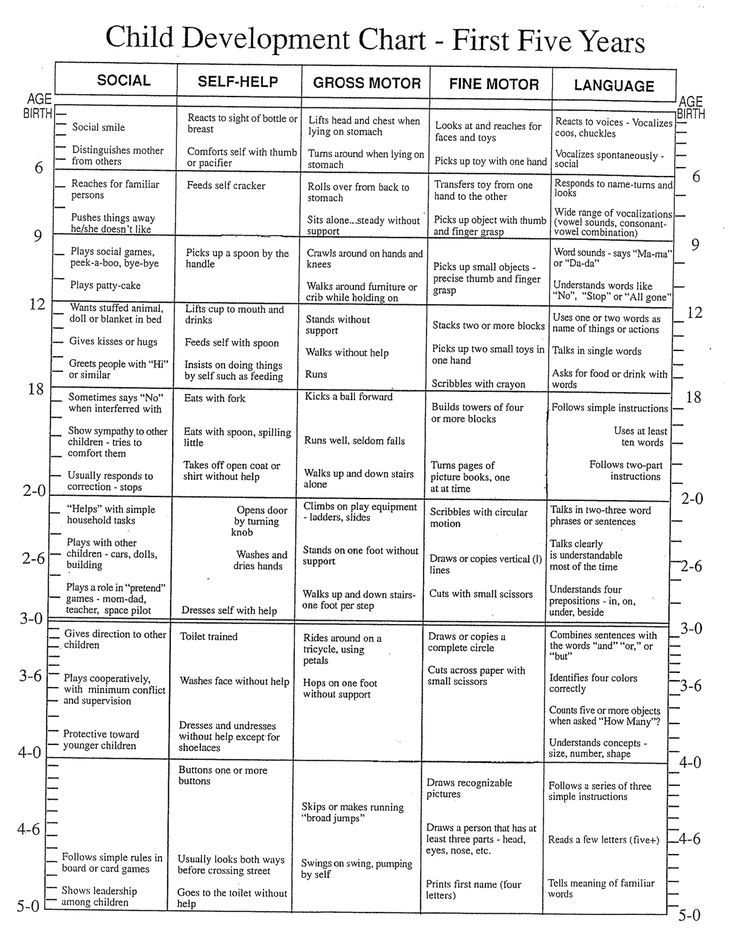 It lists the characteristics and requirements for the development of the child, his hearing, vision, emotional reactions, sensory, motor skills, etc. Thanks to the PMR calendar, you can follow the development of the child from both sides, both mental and motor. In case of any deviations, consult a doctor and solve the problem before it becomes a rib.
It lists the characteristics and requirements for the development of the child, his hearing, vision, emotional reactions, sensory, motor skills, etc. Thanks to the PMR calendar, you can follow the development of the child from both sides, both mental and motor. In case of any deviations, consult a doctor and solve the problem before it becomes a rib.
Frequency of reconciliation of indicators
If you still decide to follow the development of your child according to the calendar of psychomotor development, then it is worth remembering that each age category has its own indicator of the frequency of reconciliation of indicators. So in the first year of life, psychomotor development is checked against the calendar once a month, after 12 months and up to 3 years old it is necessary once every three months, and after up to six years - once every six months. This is due to the active development of all processes in the body up to a year and their slowdown up to six years. By the age of a younger student, psychomotor development ends, which means that the nervous processes are already fixed.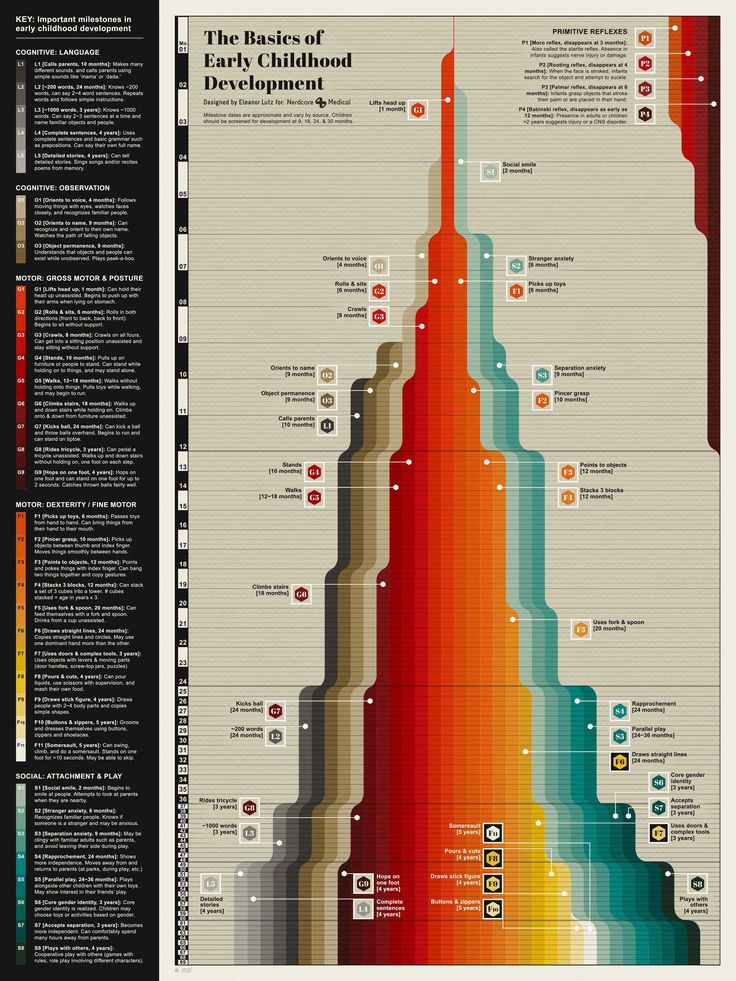
Indicators of psychomotor development of children from the first month of life to a year
First month:
1. Short-term fixation of the gaze on shiny and bright objects
2. Reaction to sound (starts at noise)
3. Capable of holding the head in a supine position
4. Smiles at close relatives whom he often sees
Second month:
1. Turns the head towards the noise source
2. Follows items
3. Capable of holding the head upright
4. Responds to speech
Third month:
1. Responds to speech with a smile or the first “aha”
2. Reaches for toys
3. Focuses on an object for a long time
4. Holds head well
5. Relies on elbows and knees in a horizontal position
6. The so-called "newborn" reflexes disappear
Fourth month:
1. Tries to roll onto back or side
2. Reaching for a toy
3. Laughs
4. "Knows" relatives, actively reacting to their appearance and behavior
Fifth month:
1.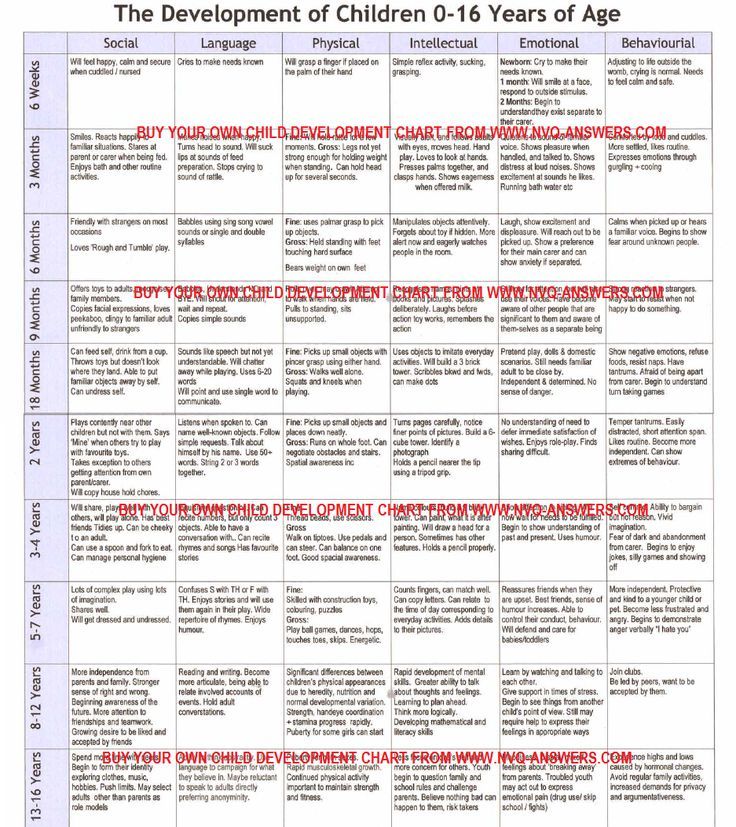 Sounds line up in a chain
Sounds line up in a chain
2. There is a clearer recognition of relatives and strangers (fear of new people is possible)
3. Reaches for toys, examines them for a long time
4. Standing with support in the armpit on the toes
Sixth month:
1. Plays with a toy, takes it from one hand to another
2. Actively rolls over from back to tummy
3. Reacts differently to relatives and strangers
4. "Ask" for pens
Seventh month:
1. With support in the armpit, dances, stands on a full leg
2. Able to hold the back itself
3. Actively moves the legs, constantly reaches for them in the supine position
4. An understanding comes that you can reach the object by turning over on your stomach or back.
5. Requires attention, because of which he often cries, if one is not enough.
Eighth month:
1. Able to sit or lie down independently
2. Can simultaneously hold an object in both handles, but not for long
3.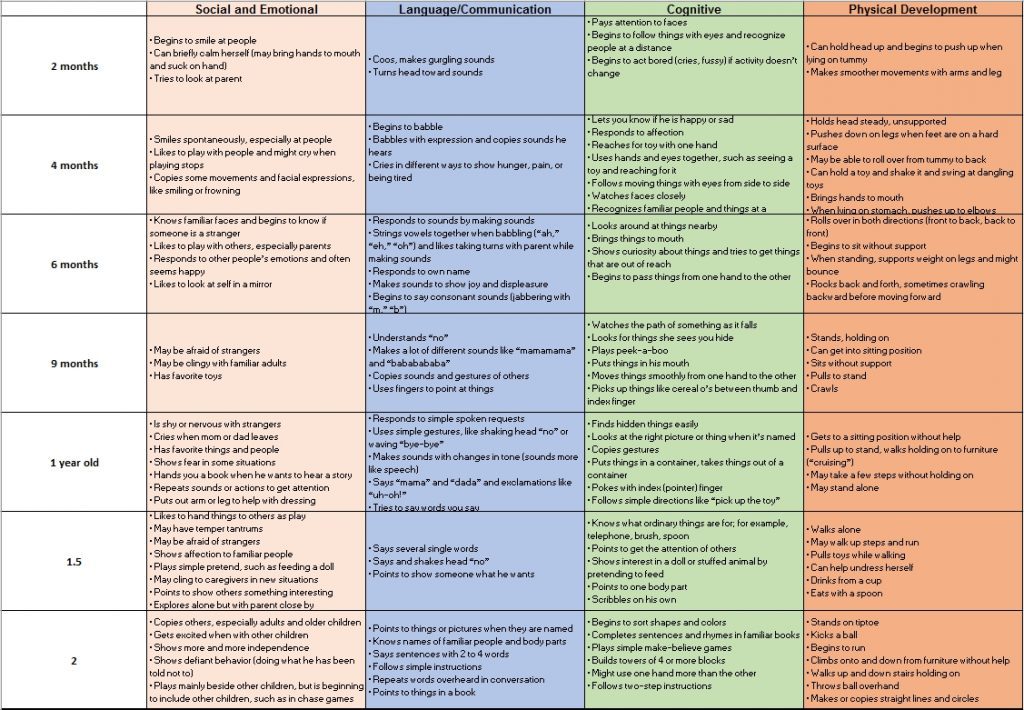 More clearly pronounces the simplest letter combinations: "Ba", "Pa", "Ma"
More clearly pronounces the simplest letter combinations: "Ba", "Pa", "Ma"
4. Laughs and reacts to speech, possibly nodding in agreement or protest
Ninth month:
1. Worth it if you hold the handle
2. Self-play with toys
3. Specially throws and monitors the fall of
4. Able to fulfill simple requests "Give me a toy", "Give me a pen."
5. Pronunciation of sounds becomes doubled
Tenth month:
1. Playing with other kids
2. Repeats simple actions after adults. For example, "talking on the phone"
3. Says first words
4. Able to walk by himself holding onto a support
Eleventh month:
1. The so-called "pluck" grip appears: takes everything with two fingers
2. Able to stand independently
3. Reacts differently to acquaintances
4. Waving hands in greeting and farewell
Year:
1. Speaks 5 or more words
2. Knows the words “may”, “should not”, “do not touch” and understands their meaning
3. Fulfills simple requests. For example, show a toy, say something, kiss or hug
Fulfills simple requests. For example, show a toy, say something, kiss or hug
4. Able to play with toys for a long time
5. Responds to changes in the environment: he understands whether he was in a given place or not.
Thanks to the constant monitoring of the development of your child, according to the psychomotor calendar, you will be able to identify inhibition, normality or acceleration of development in the early stages. Remember that in case of a delay of more than a month in the psychomotor development of your child, you should immediately consult a doctor!
Baby 2 months old ✔️ What should a child be able to do?
Your baby is 2 months old. It is this period of life that pleases and surprises parents: just a couple of weeks ago, the baby only ate and slept, and now he is more and more awake and begins to explore the world for the first time.
Two months is also such an age when mothers, especially young ones, have their first anxieties.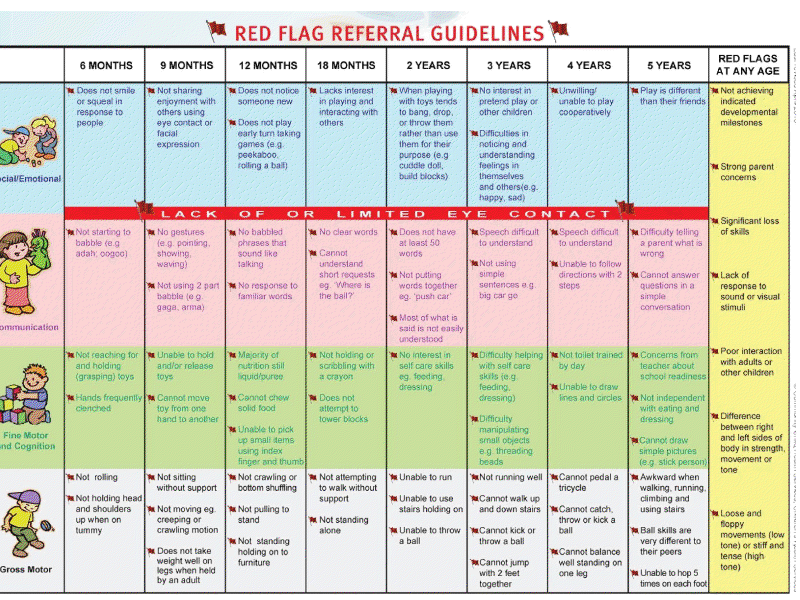 Not everything can be learned from books and from experienced grandmothers, and new parents are concerned about a variety of questions: is the child developing correctly, and what should a two-month-old baby be able to do in general, and whether it is necessary to strive for strict development standards.
Not everything can be learned from books and from experienced grandmothers, and new parents are concerned about a variety of questions: is the child developing correctly, and what should a two-month-old baby be able to do in general, and whether it is necessary to strive for strict development standards.
If you are one of the parents who are concerned about the proper development of the child, you can remain calm. The norms for the development of children at 2 months have long been established by pediatricians, and you yourself will be able to assess how your baby complies with them and, if necessary, help the baby.
Content:
- Physical development
- What a 2 month old baby should be able to do
- Movement and reflexes
- Intellectual development
- Neuropsychic development, emotions
- Sense organs
- Muscle tone
- Daily routine of a two-month-old baby
- Child development at 2 months: Dr.
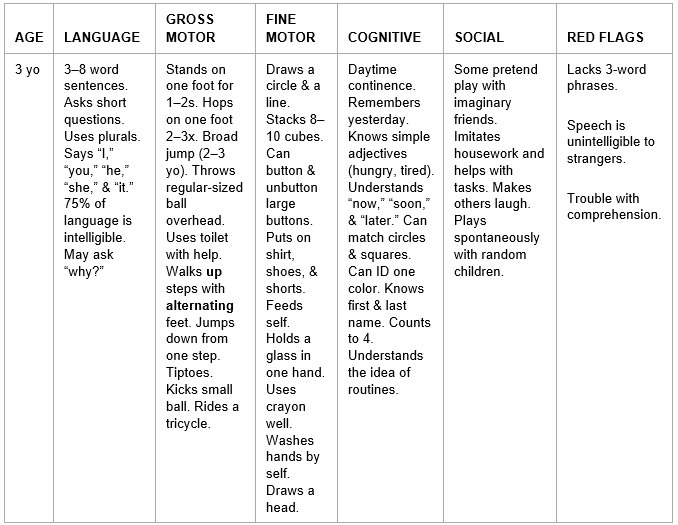 Komarovsky's opinion
Komarovsky's opinion - Common problems: when to worry and how to deal with them
- How to develop a baby: advice to parents
Prostock-studio/Shutterstock.com
Physical development
In the first year of life, the baby's physical indicators are monitored especially carefully - height, weight, head and chest circumference primarily indicate compliance with developmental standards. But deviations from the average up or down are not a reason to believe that the child is developing incorrectly, especially if the baby was born prematurely or there is a genetic predisposition to a certain body type.
Average indicators of the physical development of a two-month-old child:
| Measured parameter | Boys norm | Girls norm |
| Weight (in kg) | 4.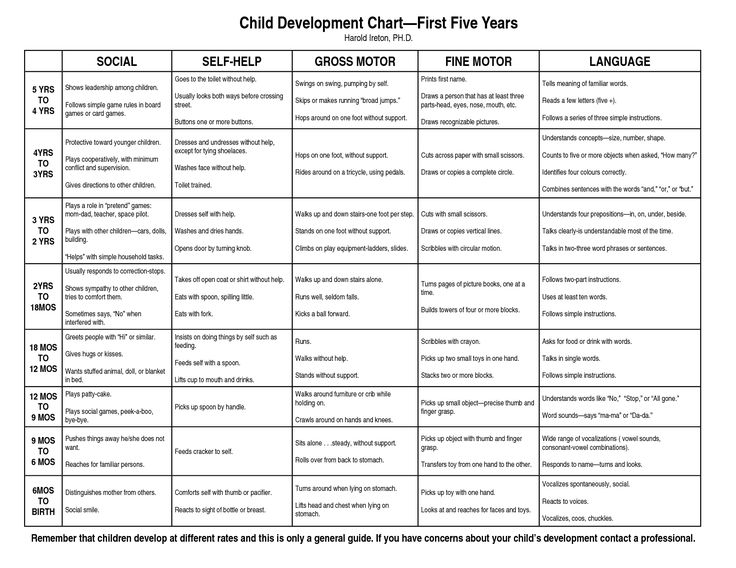 2-6 2-6 | 4.2-5.5 |
| Height (in cm) | 53.8-59.4 | 53.3-59.3 |
| Head circumference (in cm) | 39.1 | 38.3 |
| Chest circumference (in cm) | 39 | 38.1 |
⠀
Other norms for the physical development of a baby at 2 months:
- Even if the weight of a boy or girl is less or more than average, pay attention to a more important indicator - weight gain over the past month. For a period of one to two months, the child should gain about 800 grams. The total increase, taking into account the first month of life, will be 1300-1500 grams.
- Average changes in other indicators: growth over the past month has increased by 3 centimeters, head and chest circumference by 2 centimeters.
- The total duration of sleep is reduced compared to the sleep of a newborn and is approximately 18 hours.
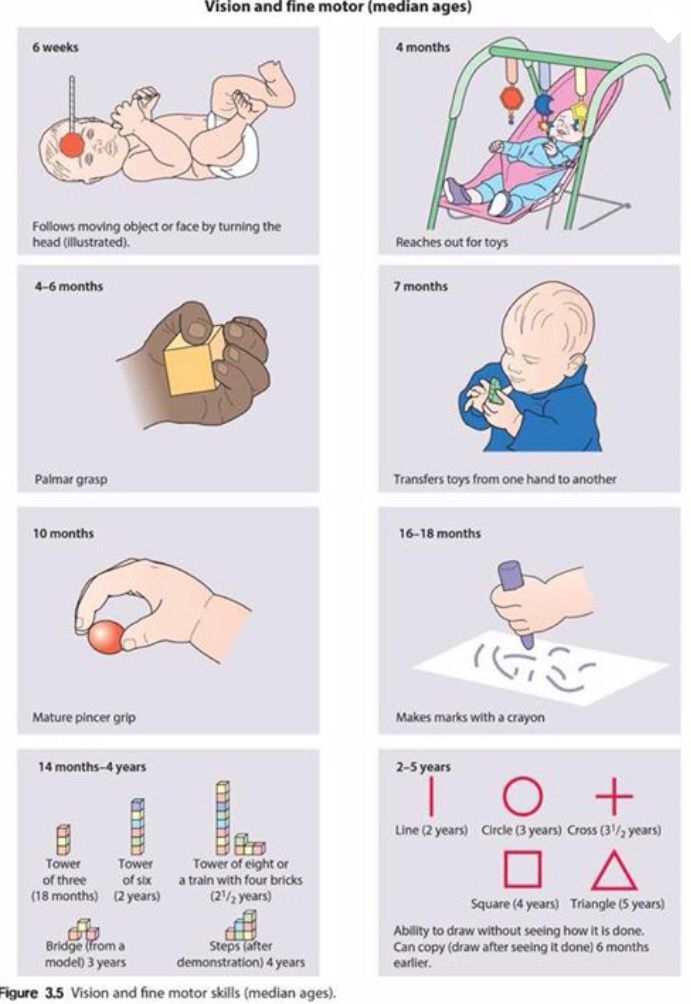
- The scalp changes: instead of the fluff, a permanent bulbous cover begins to grow.
- The child begins to better recognize pain and other unpleasant sensations - for example, feels discomfort from wet diapers. That is why a previously silent baby at the age of two months sometimes begins to cry and scream a lot.
Differences between boys and girls
Prostock-studio/Shutterstock.com
There are no significant differences in height and weight between boys and girls at two months. On average, boys are larger, but a girl who exceeds the average height and weight is not uncommon and is not considered a deviation from the norm.
According to the observations of both doctors and parents of children of different sexes, according to some indicators, girls develop faster than boys. This is true: fewer female babies are born than male babies, and girls have to learn different skills faster - this is how evolution ordered to maintain a balance between the two sexes.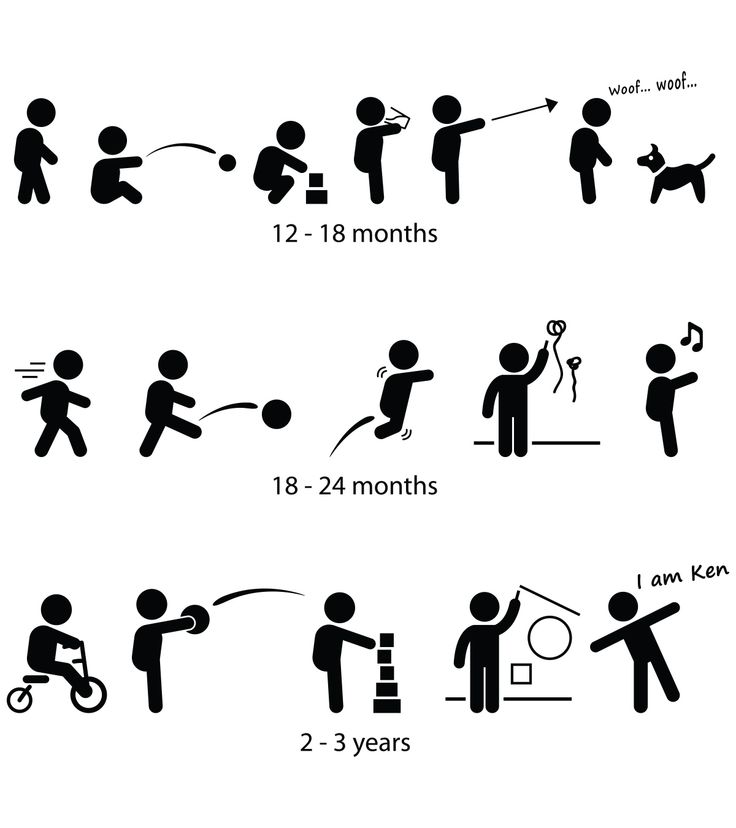 So, by the age of two months, girls hear and see better, react more sharply to stimuli.
So, by the age of two months, girls hear and see better, react more sharply to stimuli.
Physical ability
What a two-month-old baby should be able to do - physical ability:
- hold a toy or other object that an adult has placed in his hand;
- briefly, for about twenty seconds, hold your head upright and raise your shoulders while lying on your stomach;
- from a position lying on his stomach with his head raised, try to turn his head from side to side, especially if something caught his attention.
What a 2-month-old baby should be able to do
Prostock-studio/Shutterstock.com
The period of life up to three months is generally the most important for a child under one year old. And it is at two months that the child begins to behave meaningfully: the baby develops a variety of skills that confirm the normal development of motor activity, sensory organs, timely intellectual and neuropsychic development.
Briefly about what the child is already doing well by the middle or end of the second month of life:
- thanks to strengthened muscles, not only raises his head and chest while lying on his stomach, but also makes swimming movements with his arms and legs;
- knows how to squeeze and unclench his hand, grabs a toy, fingers and hair of an adult;
- brings brush to lips, can suck fingers;
- holds its head for a few seconds when in the arms of an adult;
- touches the hanging toy, pushes it away;
- rubs eyes and nose with hands or fists;
- smiles;
- shows interest in sounds;
- the first sounds appear in speech;
- distinguishes between familiar and unfamiliar people;
- briefly focuses on the subject of interest.
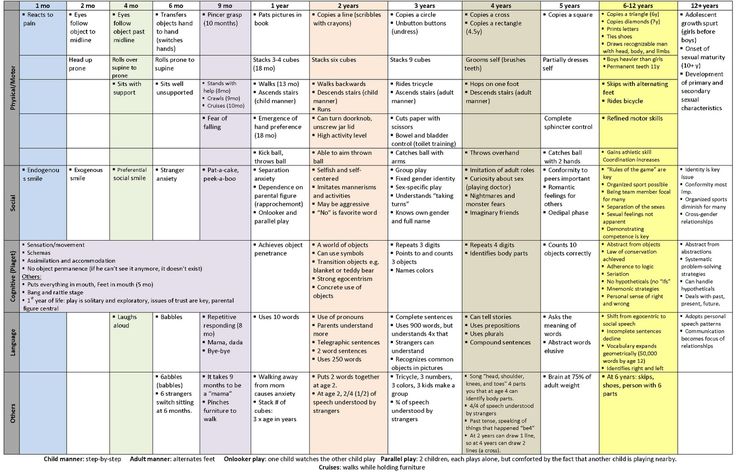
Each aspect of the development of a two-month-old baby is described below in more detail.
Motor activity and reflexes
Prostock-studio/Shutterstock.com
At two months, the baby assumes completely different postures than the newborn. Legs in the supine position or on the stomach are no longer constantly bent due to the fact that muscle hypertonicity characteristic of newborns gradually becomes weaker. However, the baby still spends part of the time in the fetal position, which is normal for its age.
The reflex is also weakened, due to which the newborn firmly rested his feet on the surface when he was held by an adult. A two-month-old baby still rests his feet on a crib, sofa or other support, but not so much. The breath holding reflex is preserved, but by the end of the second month of life, it usually completely fades away.
Automatic walking and crawling reflexes develop when the child is held in the appropriate position. By two months, the baby occasionally assumes a swordsman's position when lying on his back: he turns his head to the right and automatically straightens his right arm and right leg.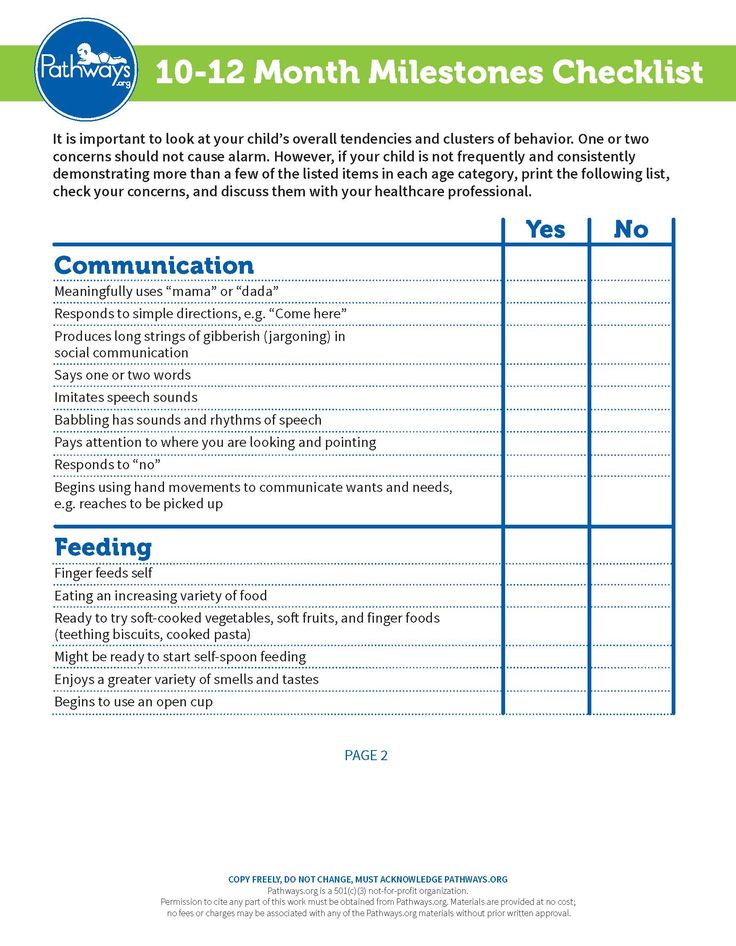 The same thing happens when turning the head to the left, only with the left arm and leg.
The same thing happens when turning the head to the left, only with the left arm and leg.
A two-month-old baby reacts differently to smells: when he smells a pleasant aroma, he freezes or smiles, when he catches an unpleasant smell, he wrinkles his nose and sneezes.
Intellectual development
Prostock-studio/Shutterstock.com
The behavior of a two-month-old baby is already quite conscious: he, to the best of his ability, learns the world and is able to establish simple cause-and-effect relationships. The kid understands that his mother is the main figure who takes care of him, and reacts to the presence of his mother differently than to other people: he smiles, tries to walk, follows his mother with his eyes. The child does not yet experience such complex emotions as fear or embarrassment and willingly goes into the arms of any adult.
In a simple form, the baby expresses his attitude to objects: he is attracted to things that are interesting to him, repels uninteresting things or does not react to them at all.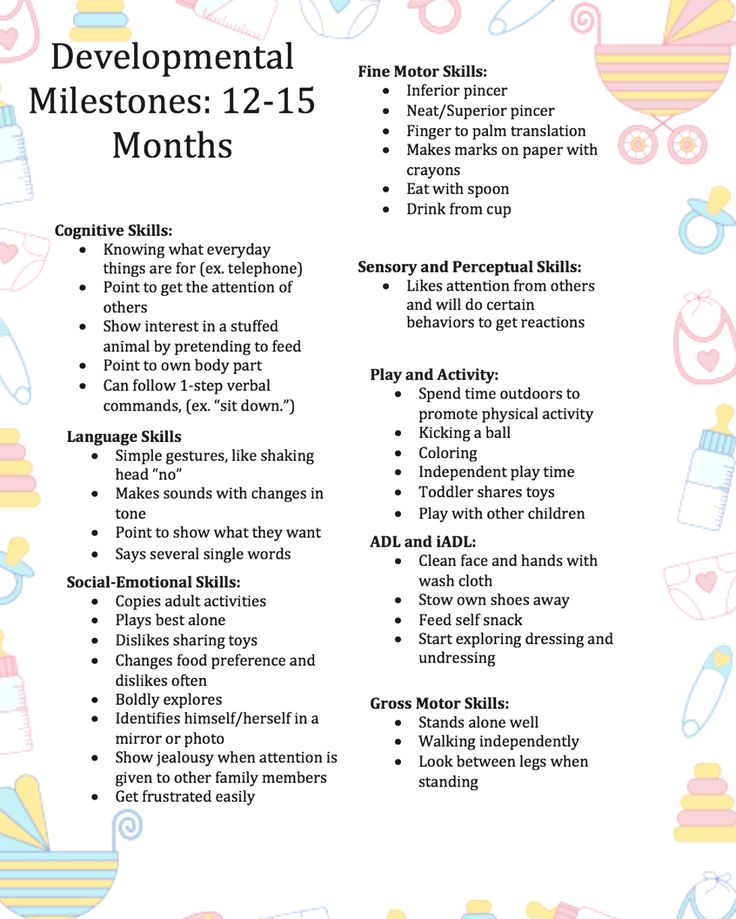 Produces simple, but already emotionally colored repetitive sounds, similar to singing. And although these first sounds seem unintelligible to others, these are the first attempts of the baby to repeat the speech of adults.
Produces simple, but already emotionally colored repetitive sounds, similar to singing. And although these first sounds seem unintelligible to others, these are the first attempts of the baby to repeat the speech of adults.
Neuropsychic development, emotions
Prostock-studio/Shutterstock.com
A child who is two months old experiences emotions and needs to respond to them. Crying changes: the cry ceases to be monotonous, like that of a newborn, intonation coloring appears. Sensitive mothers can determine the cause of discontent by the cry of their son or daughter: fatigue, soiled diapers, hunger, or something else.
The baby's smile becomes meaningful: he does not just raise the corners of his lips, but smiles in response to a certain event, for example, in response to a gentle voice. Some babies already know how to laugh at two months. The baby also cries and screams consciously, realizing that in this way you can attract the mother.
The child not only smiles, but also uses different facial expressions.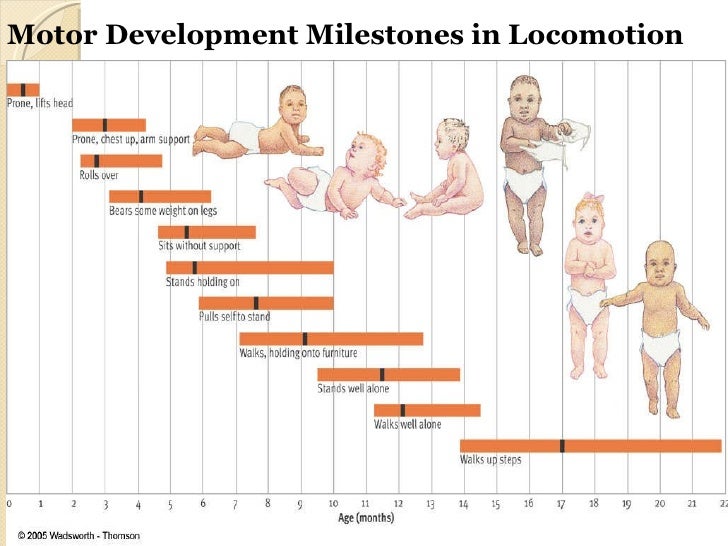 May frown and wrinkle nose, open mouth when spoken to. Holds a look at the person who is talking to him, can look at the face of the speaker for a long time and intently.
May frown and wrinkle nose, open mouth when spoken to. Holds a look at the person who is talking to him, can look at the face of the speaker for a long time and intently.
The baby is aware that a mother or other person who is talking to him affectionately can take him in her arms and emotionally anticipates this event - makes impatient sounds, quickly moves his arms and legs.
Sense Organs
Prostock-studio/Shutterstock.com
A baby grows up, and every day his sense organs develop. The child sees and hears better compared to a newly born baby and, as a result, reacts more noticeably to stimuli.
A two-month-old baby is interested in many objects, and by the middle of the second month of life, he tries to grab an attractive thing and hold it in his hand. It’s not always possible to grab it yet - at this age it is difficult to accurately calculate the trajectory of movement. But if an adult puts an object in a child's hand, then the baby will hold it, tightly squeezing his palm.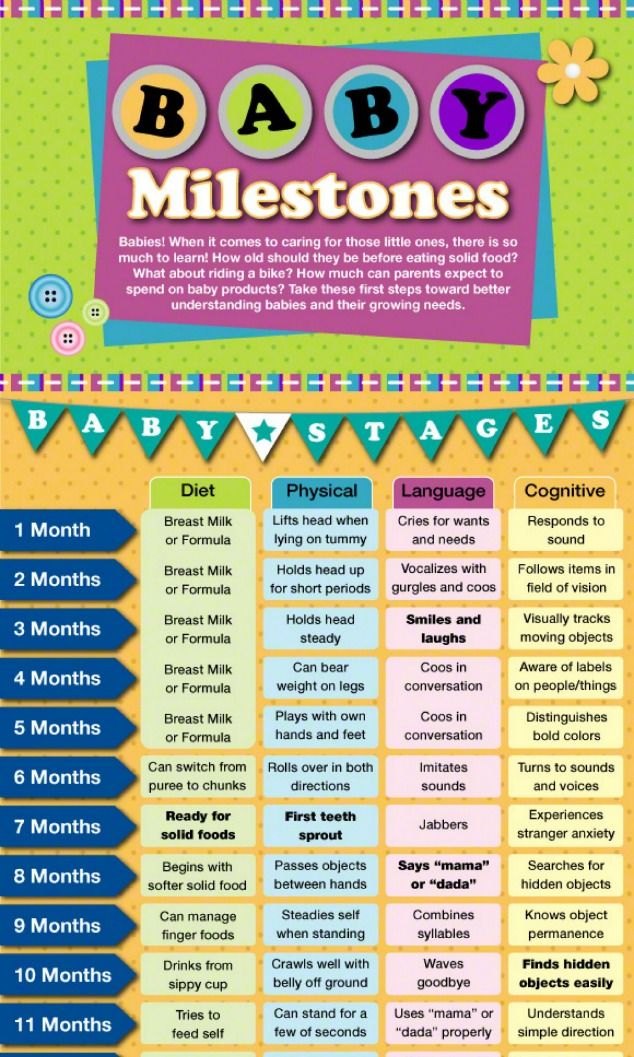
If you give a rattle to a two-month-old baby, he will quickly learn that the rattle makes sounds when it is moved. The baby begins to rattle the rattle consciously.
Hearing becomes more sensitive, and the baby looks in the direction where the sounds come from, listens for a long time. May be frightened by harsh or unfamiliar sounds, shuddering and blinking frequently.
Vision is also developing, and although the child is not yet able to distinguish small details of the surrounding world, bright and moving objects already capture the child's attention. At the age of two months, the baby begins to squint, reacting to bright light.
The baby continues to develop a threshold of taste sensations, but as a pleasant one, he only distinguishes a sweet taste. All other flavors are disgusting.
Muscle tone
Young parents are often worried about muscle hypertonicity in a two-month-old baby. Considering muscle tone a problem, moms and dads consult neurologists and pay for special massage sessions.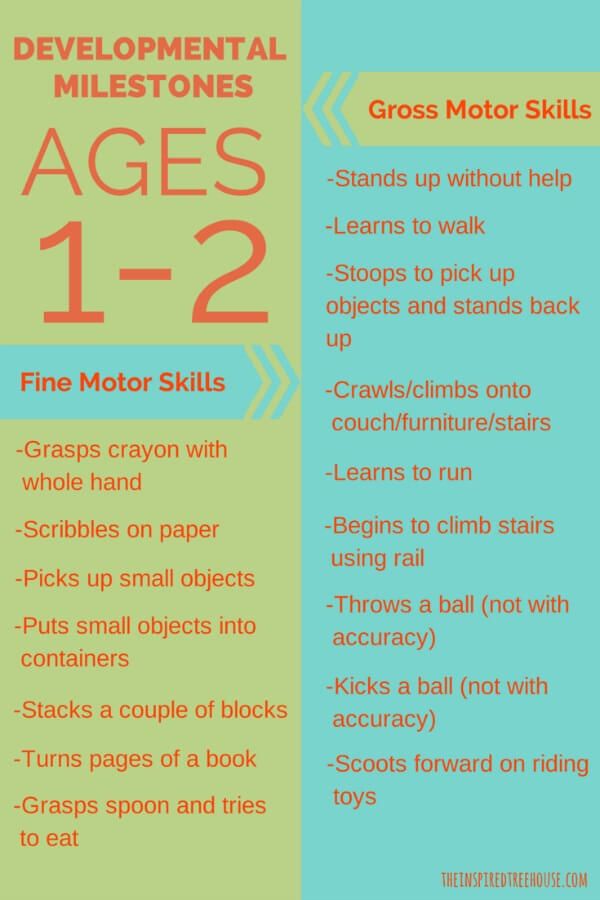
But you shouldn't worry too much about hypertonicity. At two months, muscle tone is still preserved in the arms and back. On average, hypertonicity in infants completely disappears only by 6-8 months , but if it seems to you that your child has too strong muscle tone, record the vivid manifestations of muscle hypertonicity on video and show it to your pediatrician.
Daily routine of a two-month-old baby
Prostock-studio/Shutterstock.com
The well-established routine depends on the well-being of both mother and child. It is really important to organize the order of the day, but in a two-month-old baby, biorhythms are very different from those of, for example, a six-month-old baby.
At the age of 2 months, the mother can only start preparing for the future regimen. And if a baby at this age falls asleep and wakes up at different times - this is a variant of the norm, there is no reason to worry.
Gradually accustom your child to approximately the following daily routine:
- 7.
 30 am — getting up;
30 am — getting up; - every 2.5-3 hours - feeding. The frequency of feeding is set depending on the type of feeding: breastfeeding, mixed, completely artificial;
- daytime sleep - 4-6 times a day lasting from 30 minutes to 3 hours;
- 20.30 - bathing;
- 21.00 - going to bed.
The regimen of a two-month-old baby is never stable, with rare exceptions. And if your baby, for example, sleeps little at night, falls asleep late, often wakes up for night feedings, you will have to temporarily adjust to his rhythms. Usually, by four months, children themselves begin to sleep more at night, and stay awake during the day.
Child development at 2 months: Dr. Komarovsky's opinion
Prostock-studio/Shutterstock.com
According to Yevgeny Komarovsky, the main problem with caring for children at the age of two months is the difficulty in determining the causes of crying. Mostly babies cry because of hunger, thirst, drowsiness and problems with stool.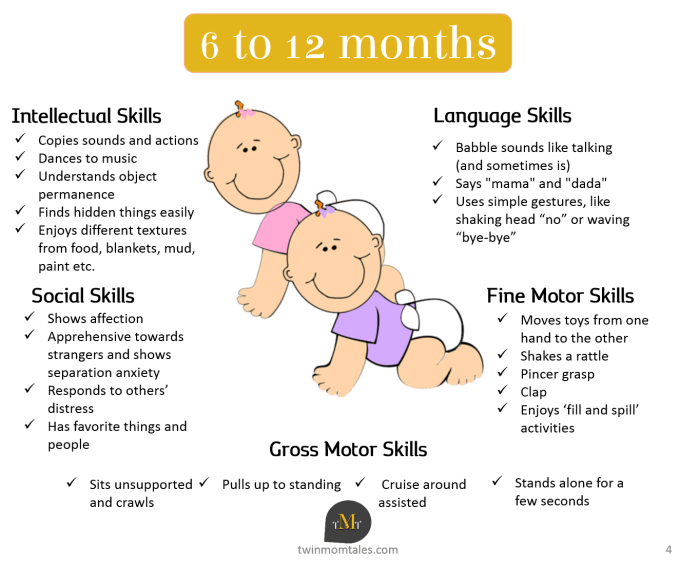 The doctor advises to start by offering a crying child to eat or drink, if it doesn’t help, try to lull the baby.
The doctor advises to start by offering a crying child to eat or drink, if it doesn’t help, try to lull the baby.
If the crying doesn't stop or gets worse, the baby may not be able to empty its bowels on its own. Remember when the child last had a chair, and if more than ten hours have passed, help the baby by giving him a stomach massage. You can try to press the legs to the stomach.
For the rest, Dr. Komarovsky advises focusing exclusively on the pace of development of your child, not trying to keep up with the rapidly developing children of friends or neighbors. Komarovsky claims that severe pathologies that would prevent the baby from starting to walk and talk are not so common and are visible not at two months, but much earlier - usually even at the stage of pregnancy.
Common problems: when to worry and how to solve them
Prostock-studio/Shutterstock.com
Young parents worry for various reasons, but the most common problems associated with the development of a two-month-old baby are five:
- The child does not even try to hold his head, constantly bowing it to the shoulder of an adult.
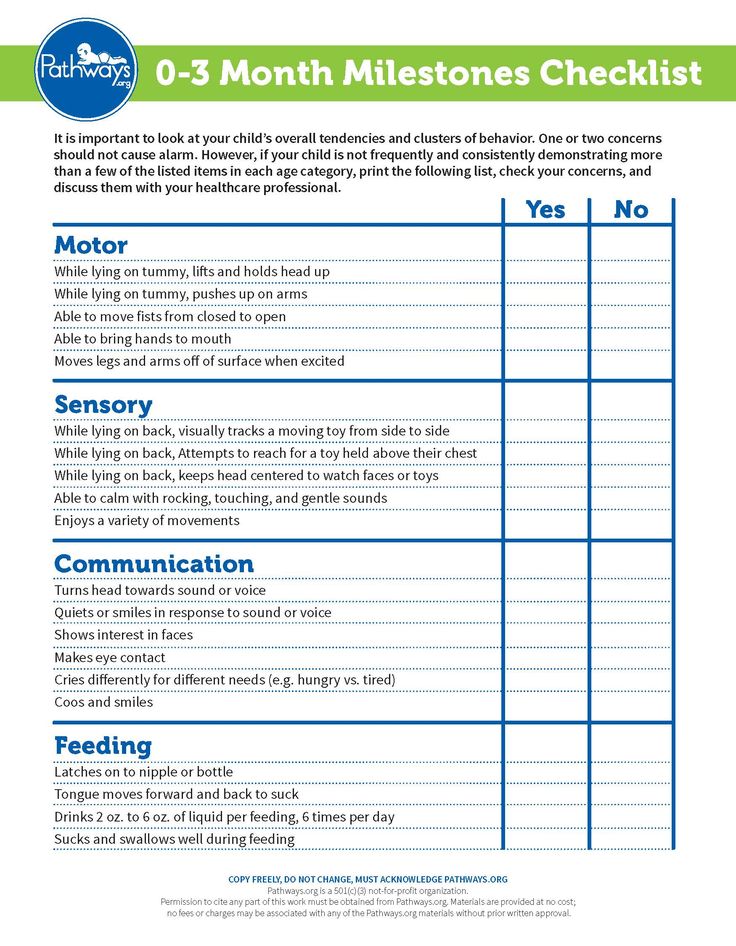
Solution: lay the baby on his stomach as often as possible (but before feeding or at least half an hour after eating) - various muscle groups are perfectly strengthened in this position, including the muscles of the neck. - You notice that the baby's muscles do not develop symmetrically: more in one part of the body than in another.
Solution: carry the baby, periodically changing hands, turn from one side to the other when he sleeps. - The baby has an anxious sleep, he sleeps poorly or little, is naughty when falling asleep and waking up.
Solution: Try to set up a schedule for going to bed and waking up around the same time. - Colic begins.
Solution: Massage the child's abdomen, apply heat to the abdomen, use a gas tube. - Dry skin, allergic reactions on baby skin.
Solution: Rethink bathing practices. Skin problems in babies happen due to too frequent bathing and the use of bath additives. Bathe your child three to four times a week without using any supplements, not even herbal teas
If problems with the development or care of the baby are episodic or easily solved by the parents, there is no reason for concern. But if a specific problem is not solved in any way - for example, by the end of the second month of life, the child cannot hold his head at all or suffers from too painful colic - be sure to consult a doctor.
But if a specific problem is not solved in any way - for example, by the end of the second month of life, the child cannot hold his head at all or suffers from too painful colic - be sure to consult a doctor.
How to check the speech and motor development of your baby, in the video:
How to develop your baby: tips for parents
Follow simple tips to help your two-month-old baby develop correctly:
- talk a lot with your son or daughter to promote development hearing and speech;
- play with the rattle, moving it from side to side in front of the child - both vision and the ability to concentrate are trained in this way;
- regularly do a light massage - it will relax the baby and create a close emotional connection with the mother;
- spend more time outdoors;
- from educational toys at the age of two months, play mats and mobiles can be used.
Remember that all norms are not the ultimate truth. And even if your baby developed some skill later than the average of two-month-old children, this does not mean that something is wrong with the child.